I found a peaceful part of the world when I went rockhounding in an old mining claim in northern California. It’s an area that’s had a lot of unpeaceful upheaval in the past — it’s on the Melones earthquake fault where the oceanic plate collided with the continental plate, creating this green serpentinite rock that snakes around the foothills of the Sierras. There’s so much of it and I love collecting it (yea, it’s free to visit and pick up small amounts).
In the 1900s, Beryl and Clara Stifle found gems and minerals at this location, called Traverse Creek and filed a claim on the property. They pulled out some gems called El Dorado or California emeralds. They aren’t emeralds, but vesusvianite crystals, softer but similar to true emeralds. They actually sold them to Tiffany’s in New York. In 1954, the claim was transferred to the El Dorado Mineral and Gem Society.
The serpentinite rock was slicker and lighter than the surrounding rock, and it was pushed to the surface. Molten rock caused gases which were forced into the cracks of the serpentinite rock. As the gases cooled they formed minerals and gemstones in these rock veins — which are called lodes.
California became the hot spot as miners flocked to the “Mother Lode.” Everyone was looking for gold. By 1850, miners were well situated in the nearby towns. This area is close to the site of where John Marshall found the first gold at Sutter’s Mill.
These serpentinite rocks are from the ocean floor, very long time ago. I didn’t find any vesuvianite crystals. Supposedly they are in the rock under the Bay trees. But I only found Bay leaves and serpentinite.
The serpentine group of minerals found in this rock can include magnesium, chromium, nickel, and cobalt. Some varieties of serpentinite contain a mineral called “chrysotile” ( meaning yellowish fiber) that crystallizes into a fibrous material referred to as asbestos. My samples have the more waxy green mineral in them, not the fibrous chrysotile. The surfaces are slick, polished-looking with striated surfaces called “slickensides” which are the result of minor shearing movements during deformation of the region. These are metamorphic rocks, formed by hydrothermal action and moderate pressure.
The green scale look of the rock supposedly is why it is called serpentine rock — named from the Latin serpentinus. I guess it looks like snake skin. It has varying colors of green, black and almost navy colors.
Reading:

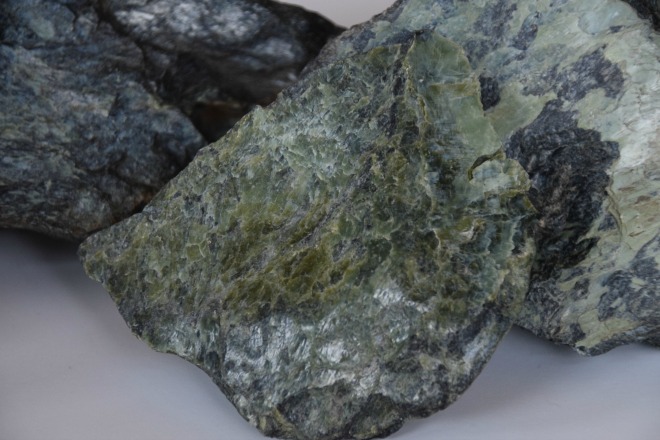

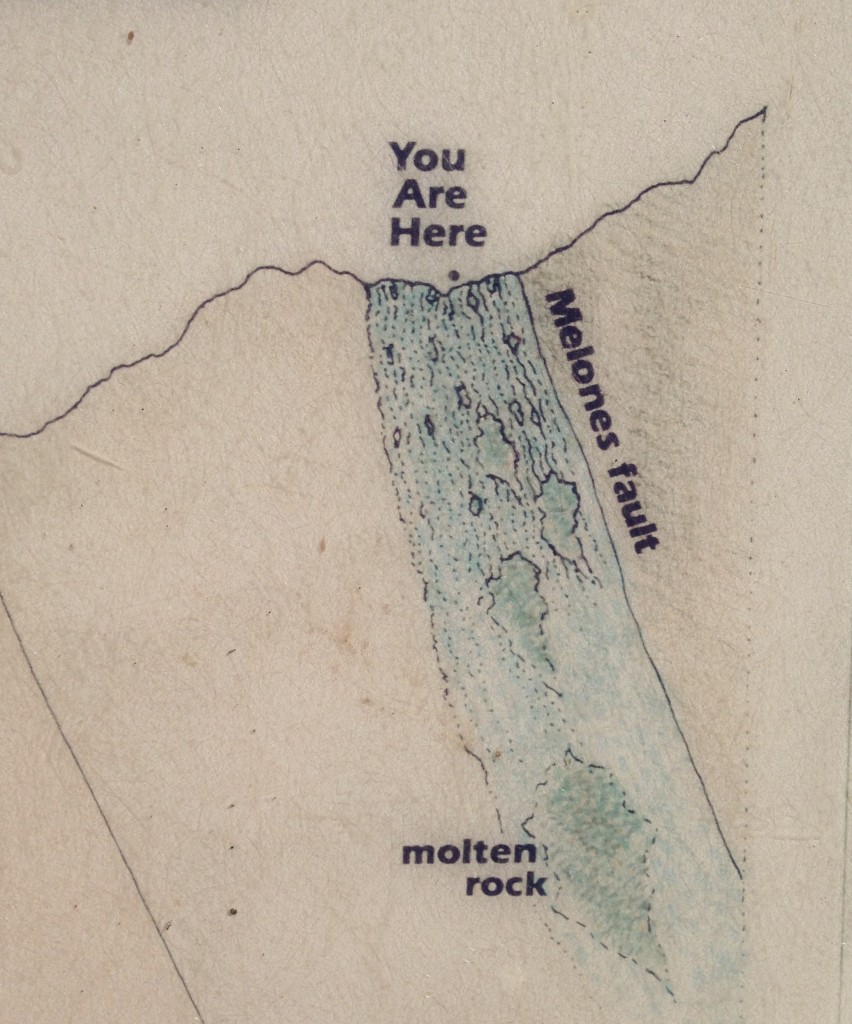
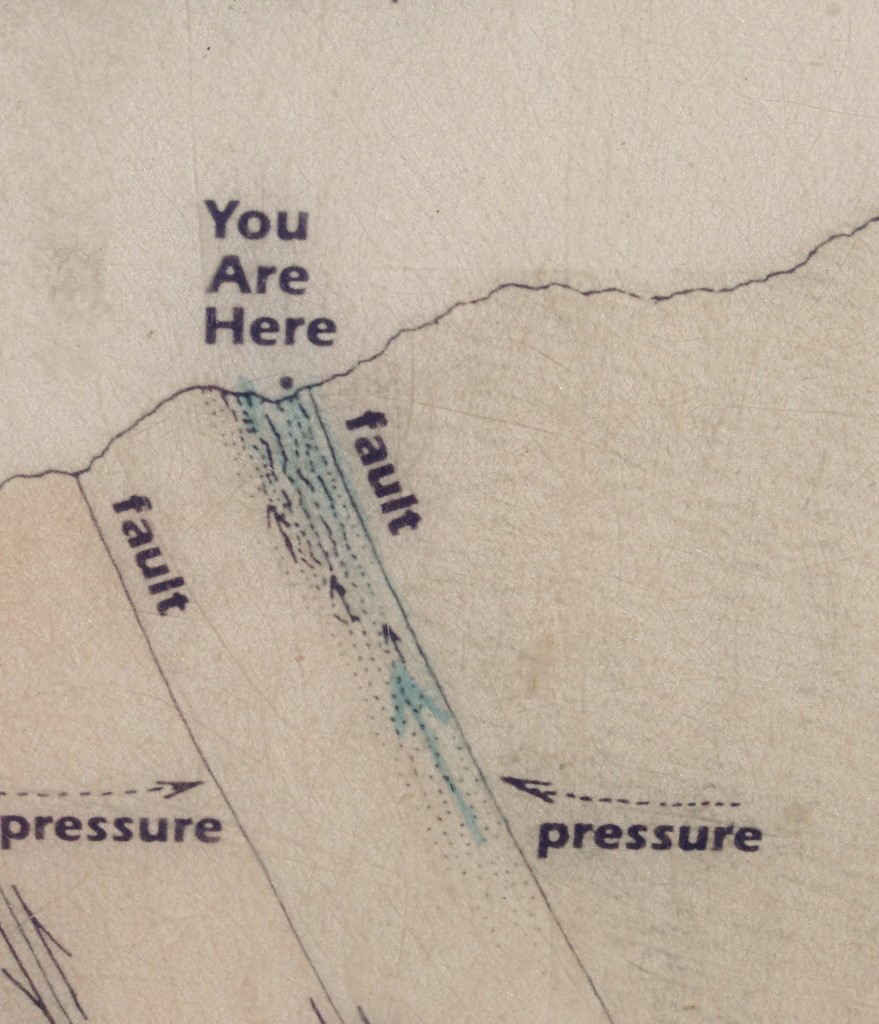
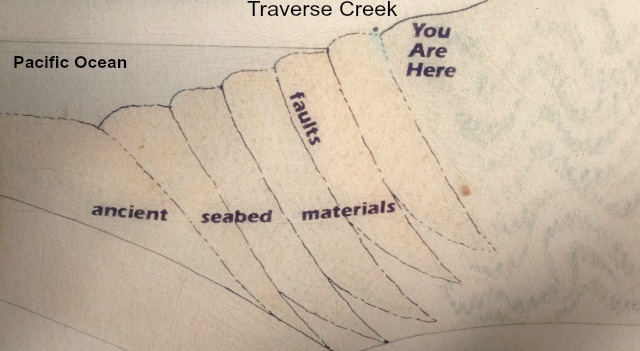
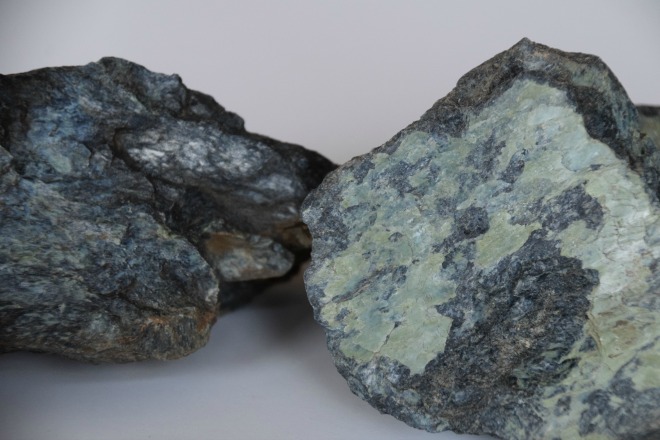
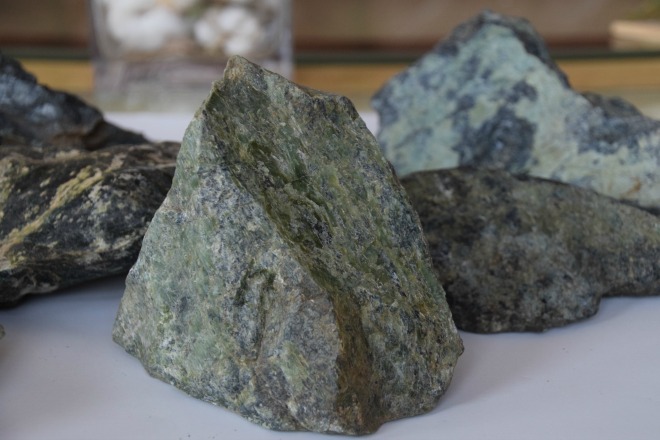
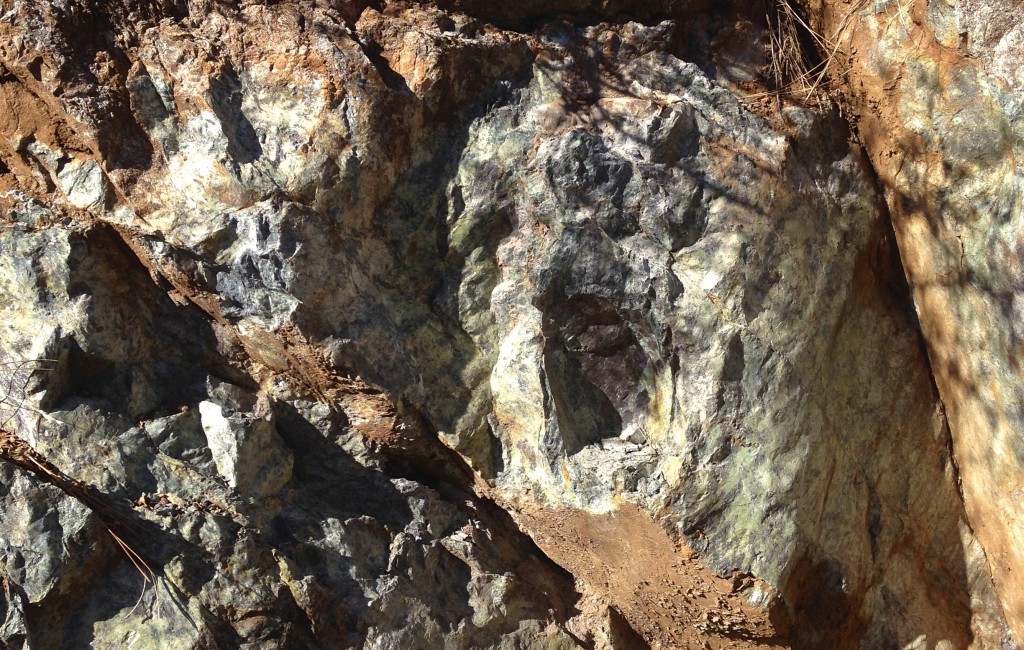
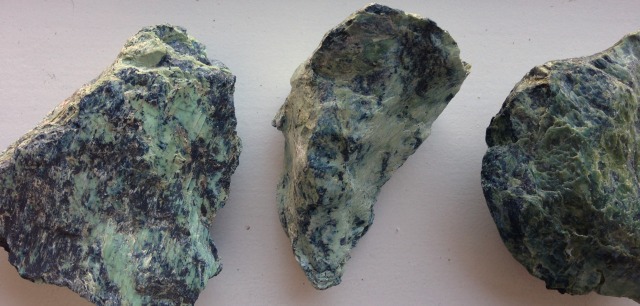
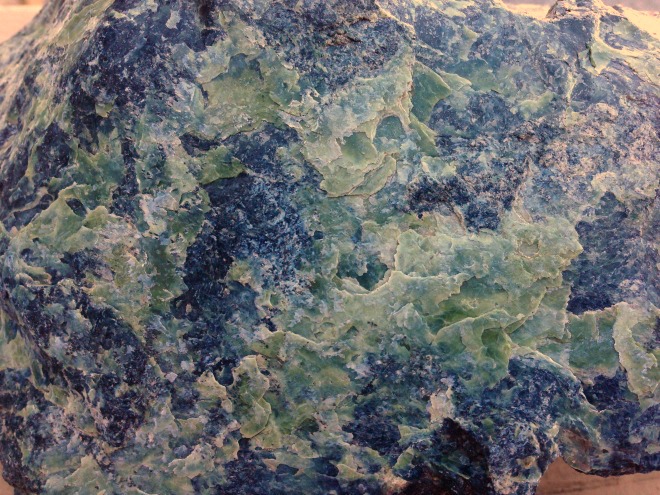
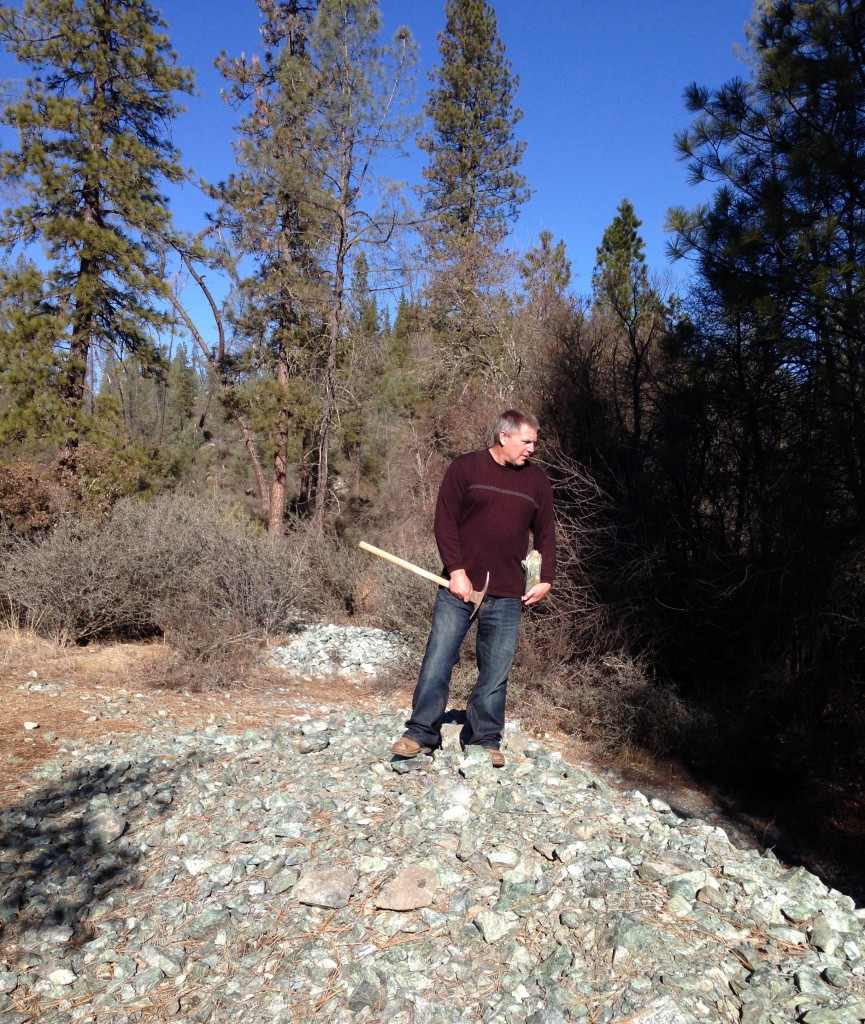
Trackbacks/Pingbacks